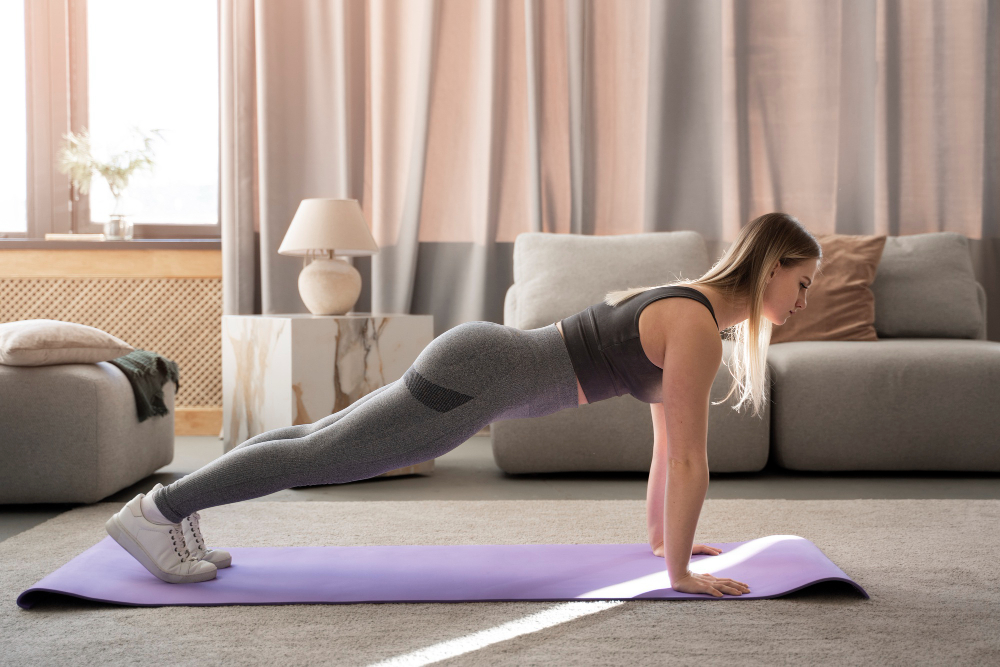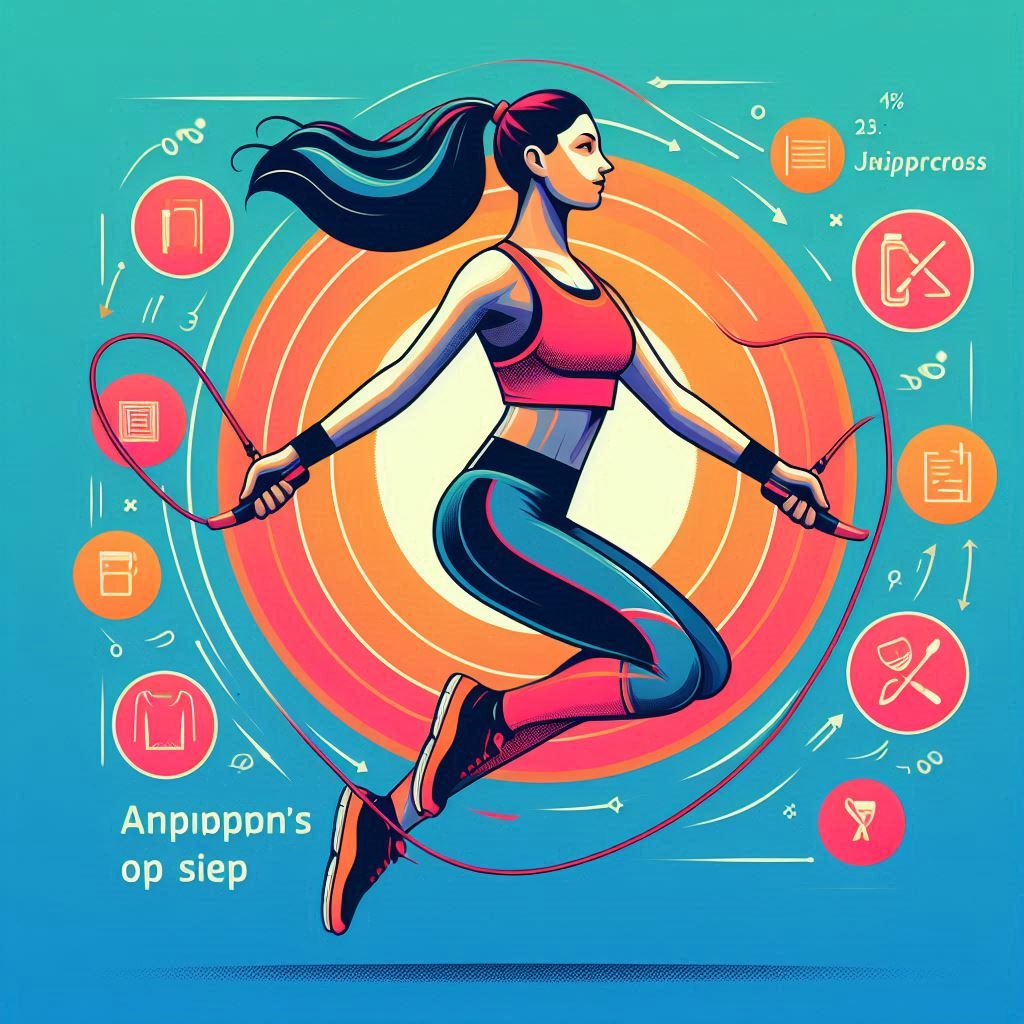Home Workouts:
In today’s fast-paced world, finding time to exercise can be a challenge. However, staying fit and healthy doesn’t have to involve expensive gym memberships or fancy equipment. Home workouts are a convenient and effective way to achieve your fitness goals without leaving the comfort of your home. This article will guide you through the benefits of home workouts, various types of exercises you can do, and tips to stay motivated.
Table of Contents
Benefits of Home Workouts
Convenience
Home workouts offer convenience, allowing you to exercise at any time that suits your schedule, whether it’s early in the morning, during lunch break, or late at night.
Cost-Effective
Home workouts eliminate the need for a gym membership, saving you money. Many effective exercises require little to no equipment, making it an affordable option.
Privacy
Exercising at home provides a private environment, which can be especially beneficial for beginners who may feel self-conscious at the gym.
Flexibility
You can tailor your workouts to fit your specific needs and preferences. Whether you enjoy yoga, strength training, or high-intensity interval training (HIIT), you can create a routine that works for you.
Reduced Travel Time
Eliminating the commute to and from the gym gives you more time to focus on your workout and other important tasks.
Types of Home Workouts

Bodyweight Exercises
Bodyweight exercises rely on your body weight to provide resistance, making them an excellent option for home workouts. They require no equipment and can be modified for all fitness levels.
Examples:
• Push-Ups: Strengthen the chest, shoulders, and triceps.
• Squats: Target the quadriceps, hamstrings, and glutes.
• Planks: Enhance core stability.
• Lunges: Improve leg strength and balance.
• Burpees: Offer a full-body workout and boost cardiovascular fitness.
Benefits:
• No equipment needed.
• Can be done anywhere.
• The product is designed to be easily adjustable to suit various fitness levels.
Cardio Workouts
Cardio exercises increase your heart rate, improve cardiovascular health, and burn calories. These workouts can be done in small spaces and often require no equipment.
Examples:
• Jumping Jacks: A full-body cardio exercise.
• Running in Place: Mimics running without the need for much space.
• High Knees: Engage the core and improve leg strength.
• Mountain Climbers: Combine cardio and core strengthening.
• Skipping Rope: An effective, high-intensity cardio workout.
Benefits:
• Improves heart health.
• Burns calories.
• Can be done in small spaces.
Strength Training
Strength training exercises build muscle and improve overall strength. With minimal equipment like dumbbells, resistance bands, or kettlebells, you can perform a wide range of exercises at home.
Examples:
• Dumbbell Rows: Strengthen the back and biceps.
• Resistance Band Squats: Add resistance to bodyweight squats.
• Kettlebell Swings: Engage the whole body, especially the core and glutes.
• Bicep Curls: Focus on the biceps.
• Tricep Dips: Use a sturdy chair or bench to work the triceps.
Benefits:
• Builds muscle and strength.
• Increases metabolism.
• Enhances bone density.
Yoga and Pilates
Yoga and Pilates are excellent for improving flexibility, balance, and core strength. They can also help reduce stress and improve mental well-being.
Examples:
• Downward Dog: Stretches the hamstrings and calves.
• Child’s Pose: Provides a gentle stretch for the back.
• Pilates Hundred: Strengthens the core.
• Warrior Pose: Enhances balance and strength.
• Bridge Pose: Works the glutes and lower back.
Benefits:
• Improves flexibility and balance.
• Enhances mental well-being.
• Can be done with minimal space and equipment.
High-Intensity Interval Training (HIIT)
HIIT involves short bursts of intense exercise followed by brief periods of rest or low-intensity exercise. It’s an efficient way to burn calories and improve cardiovascular fitness in a short amount of time.
Examples:
• 20 seconds of Jump Squats: Followed by 10 seconds of rest.
• 20 seconds of Push-Ups: Followed by 10 seconds of rest.
• 20 seconds of High Knees: Followed by 10 seconds of rest.
• 20 seconds of Plank: Followed by 10 seconds of rest.
Benefits:
• Burns a high number of calories in a short time.
• Improves cardiovascular fitness.
• Can be done with minimal equipment.
Dance Workouts
Dance workouts are a fun way to get moving and burn calories. They often incorporate elements of aerobic exercise and can be done solo or with family members.
Examples:
• Zumba: Combines Latin and international music with dance moves.
• Hip-Hop Dance: A high-energy workout that includes various hip-hop moves.
• Dance Cardio: General cardio workouts set to music.
Benefits:
• Fun and engaging.
• Burns calories and improves cardiovascular health.
• Can be done alone or with others.
Flexibility and Mobility Exercises
Flexibility and mobility exercises help improve the range of motion in your joints and muscles, reducing the risk of injury and enhancing overall movement quality.
Examples:
• Dynamic Stretching: Involves moving parts of your body and gradually increasing reach or speed.
• Static Stretching: Involves holding a stretch for a period of time.
• Foam Rolling: Helps release muscle tightness and improve flexibility.
Benefits:
• Reduces the risk of injury.
• Improves range of motion.
• Enhances overall movement quality.
Core Workouts
Core workouts focus on strengthening the muscles in your abdomen, lower back, hips, and pelvis. A strong core improves posture, balance, and stability.
Examples:
• Crunches: Focus on the abdominal muscles.
• Leg Raises: Strengthen the lower abdominal muscles.
• Bicycle Crunches: Work the entire core, including obliques.
• Russian Twists: Target the oblique muscles.
• Planks: Enhance overall core stability.
Benefits:
• Improves posture and stability.
• Enhances balance.
• Reduces the risk of back pain.
Tips for Staying Motivated
- Set Clear Goals
Having specific, achievable goals will help you stay focused and motivated. Whether it’s losing weight, building muscle, or improving overall fitness, define what you want to accomplish. - Create a Routine
Establish a regular workout schedule and stick to it. Consistency is key to seeing progress and developing a habit. - Track Your Progress
Keep a workout journal or use a fitness app to monitor your progress. Recording your workouts and achievements will help you stay motivated and see how far you’ve come. - Mix It Up
Variety is essential to prevent boredom and keep your workouts challenging. Try different exercises and workout styles to keep things interesting. - Find a Workout Buddy
Exercising with a friend or family member can make workouts more enjoyable and hold you accountable. - Reward Yourself
Set milestones and reward yourself when you achieve them. It could be a new workout outfit, a healthy treat, or a relaxing spa day.
Conclusion
Home workouts offer a flexible, cost-effective, and convenient way to stay fit and healthy. With a variety of exercises to choose from, you can create a personalized fitness routine that meets your goals and preferences. Remember to stay consistent, track your progress, and most importantly, have fun. Embrace the freedom and possibilities that home workouts provide, and you’ll be well on your way to achieving your fitness goals.
FAQ
What are the benefits of home workouts?
Home workouts offer numerous benefits, including convenience, cost-effectiveness, and the ability to fit exercise into any schedule. They eliminate the need for a gym membership and allow you to work out in a comfortable, private environment. Additionally, home workouts can be customized to suit your fitness level and goals.
Do I need any equipment for home workouts?
Many home workouts can be performed without any equipment, using just your body weight for resistance. However, some exercises may benefit from minimal equipment such as dumbbells, resistance bands, a yoga mat, or a stability ball. Investing in basic equipment can enhance the variety and effectiveness of your workouts.
How can I stay motivated to work out at home?
To stay motivated, set clear and achievable fitness goals, create a regular workout schedule, and track your progress. Mixing up your workouts to keep them interesting and finding a workout buddy can also help. Additionally, rewarding yourself for reaching milestones and reminding yourself of the benefits of exercise can keep you motivated.
How often should I work out at home?
The frequency of your workouts depends on your fitness goals and current fitness level. A general recommendation is to aim for at least 150 minutes of moderate-intensity exercise or 75 minutes of vigorous-intensity exercise per week, along with two or more days of strength training. However, it’s important to listen to your body and allow for rest and recovery.
Can I build muscle with home workouts?
Yes, you can build muscle with home workouts. Bodyweight exercises like push-ups, squats, and lunges are effective for building strength. Incorporating resistance bands, dumbbells, or other weights can further enhance muscle growth. Consistency and progressive overload (gradually increasing the intensity of your workouts) are key to building muscle.
What are some good resources for home workout routines?
There are numerous resources for home workout routines, including fitness apps, YouTube channels, and online fitness programs. Some popular apps include MyFitnessPal, Nike Training Club, and FitOn. For YouTube channels, try FitnessBlender, Blogilates, or Yoga with Adriene.
Can I do yoga and Pilates at home?
Yes, yoga and Pilates can easily be done at home. There are many online classes and tutorials available that guide you through various poses and exercises. A yoga mat and some basic knowledge of the poses and techniques are all you need to get started.
How can I ensure proper form during home workouts?
To ensure proper form, start by performing exercises slowly and with control. Use mirrors to check your alignment and watch instructional videos from reputable sources. If possible, get feedback from a fitness professional. Proper form is crucial to avoid injuries and maximize the effectiveness of your workouts.

